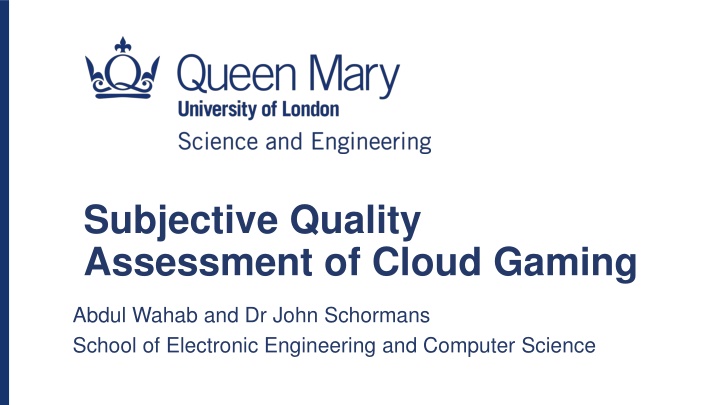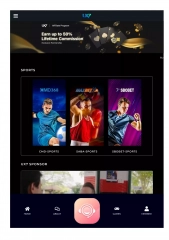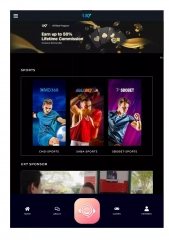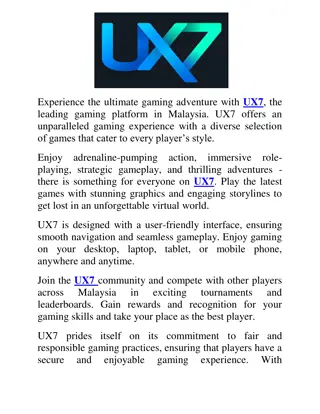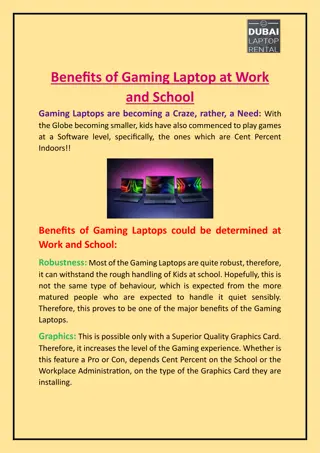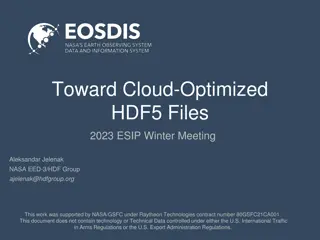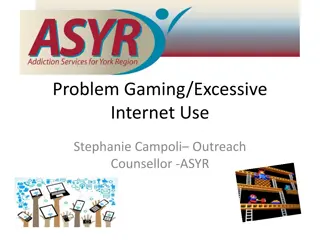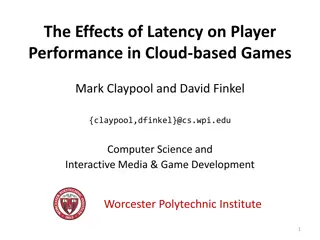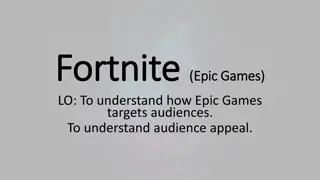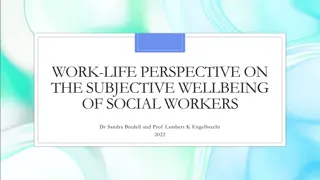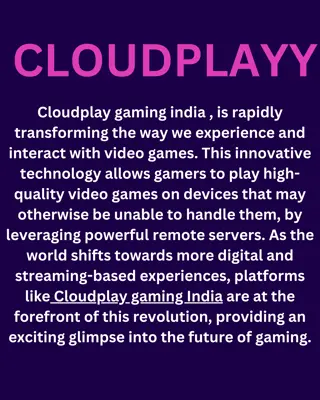Subjective Quality Assessment of Cloud Gaming
This study delves into the impact of network-level Quality of Service on the Quality of Experience in popular cloud gaming platforms. It explores the correlation between subjective video quality and game quality, using a detailed methodology involving game selection, QoS implementation, and subjective testing.
Download Presentation

Please find below an Image/Link to download the presentation.
The content on the website is provided AS IS for your information and personal use only. It may not be sold, licensed, or shared on other websites without obtaining consent from the author.If you encounter any issues during the download, it is possible that the publisher has removed the file from their server.
You are allowed to download the files provided on this website for personal or commercial use, subject to the condition that they are used lawfully. All files are the property of their respective owners.
The content on the website is provided AS IS for your information and personal use only. It may not be sold, licensed, or shared on other websites without obtaining consent from the author.
E N D
Presentation Transcript
Subjective Quality Assessment of Cloud Gaming Abdul Wahab and Dr John Schormans School of Electronic Engineering and Computer Science
Motivation Emerging application with a prospective $1B+ market cap by 2021 (statista,2021) Major service providers have millions of subscriptions and growing
What is cloud gaming? Gaming-as-a-Service (Gaas) Thin client with low or no GPU Cloud gaming server Cloud gaming client User-action reception Transport Network Video capture Game logic implementation Decoding Frame rendering User action capture Hardware/software video encoding
Research Problems How does network-level Quality of Service (QoS) affect the Quality of Experience (QoE) of popular games on cloud gaming platforms? Are the subjective video quality and game quality same or different?
Methodology Game Selection Subjective Testing QoS implementation Genre Content complexity Pace Popularity Learning difficulty NetEM modification Delay Only PLR Only Mixed (delay + PLR) 32 subjects Each ranking 39 x 3 scenarios on ACR. Video quality Game quality Overall quality
Game Selection Pace Content Complexity Genre Action Adventure Grand Theft Auto V Mafia Red dead redemption High High SITI Grand Theft Auto V Grand Theft Auto V Red dead redemption Intermediate Counter Strike global offensive First person shooting Battlefield V Counter Strike global offensive Call of duty Intermediate SITI Counter Strike global offensive Call of duty Low FIFA 2020 Low SITI Sports Forza FIFA 2020 Forza FIFA 2020 Rocket League
QoS implementation Three classes of scenarios implemented: I. Delay only II. PLR only III. Mixed (delay + PLR) Table: Summary of Network parameters implemented in NetEM
NetEm modifications Realistic Delay distributions implemented using iproute2 and custom tables. Empirical correlation between PLR and delay implemented.
Results: Delay only scenarios Game with high content complexity and pace gets affected more by increasing delay.
Results: PLR only scenarios Game with high content complexity and pace gets affected more for increasing PLR.
Results: Mixed scenarios Good-2-better (%G2B) > 4 MOS Poor-2-Worse (%P2W) < 3 MOS So far video and game quality are closely related but different. Table: %G2B and %P2W of QoE dimensions for GuTs
Video and Game Quality: Same or Different? Using MOS alone: they show differences. Shortcoming of MOS. Distribution analysis using Wilcoxon Sign Rank (WSR) Test 91% times the difference between Video and Game quality are not significant.
Video and Game Quality: Same or Different? Results of WSR test Red: Not significantly different. Green: Significantly different
Conclusion Game with higher pace and content complexity perform worse at degrading network conditions Network tuning with QoE management is important. Subjective game and video quality are not significantly different. Steppingstone for objective QoE metric for cloud gaming.
